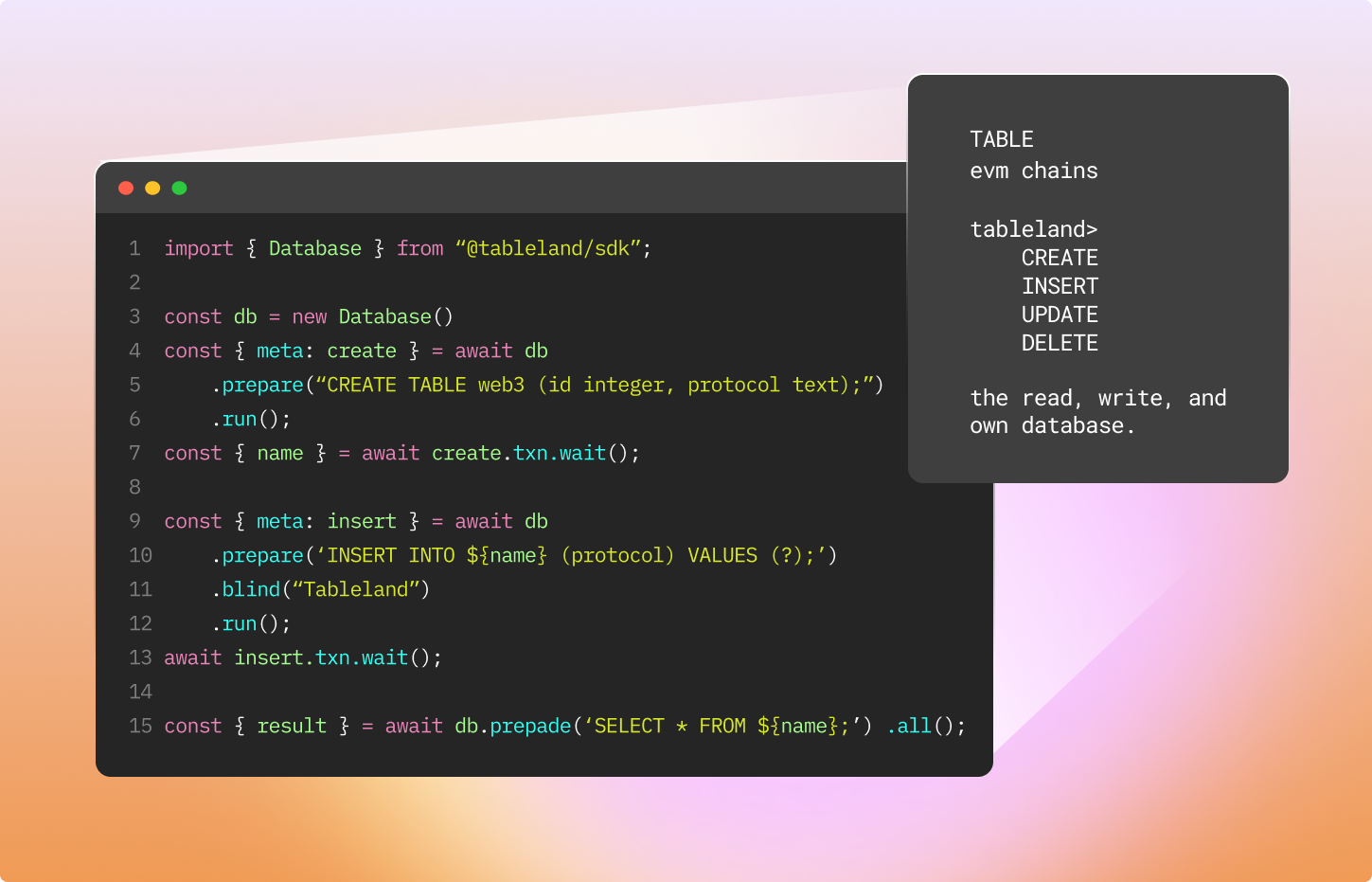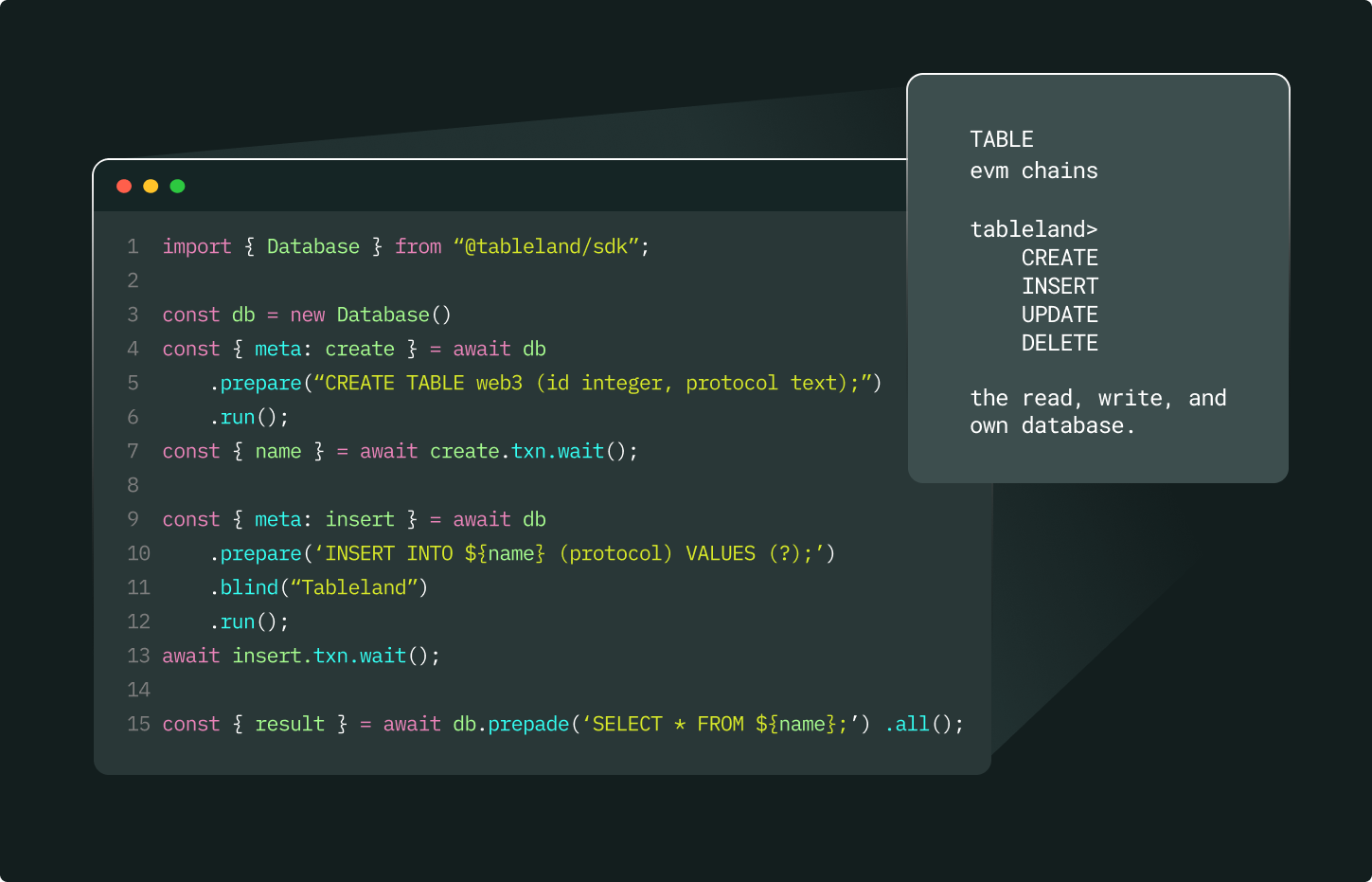Documentation
Explore how to store & query data on Tableland—the serverless database for web3 apps.
Program your web3 data
Tableland is a decentralized database built on the SQLite engine, providing developers with a web3-native, relational database that easily integrates into their stack. With Tableland, you can:
- Utilize SQL to interact with web3 data, making the development process simpler and more efficient.
- Configure row-level access rules driven by wallet addresses, token ownership, account balances, and any logic you choose.
- Build robust data pipelines that process and distribute large amounts of data for DeFi, DeSci, games, and more, all decentralized and autonomous, leveraging Tableland's infrastructure.
Deploy across multiple blockchains, including Ethereum, Polygon, Arbitrum, and Optimism, and be a part of the growing number of projects using Tableland for data-driven applications.
Get started

Easy integration
Choose from a variety of options including the JavaScript/TypeScript SDK, smart contracts, CLI tool, or REST API. By using these tools, developers can easily create tables, insert data, and query the database without worrying about the underlying infrastructure.
Flexible data management
Dynamically update your data using on-chain actions, with read queries made directly to Tableland. Easily manage both on-chain and off-chain data, providing greater flexibility and ease of use. Plus, with a network of nodes running SQLite, you can trust that your data is always available and up-to-date.
Granular access control
Configure row-level access rules driven by wallet addresses, token ownership, account balances, & any logic you choose. All tables are minted as ERC721 tokens by a Tableland registry smart contract on each chain, allowing for easy integration with smart contracts & enabling you to create adaptable on-chain workflows for collaborative data.